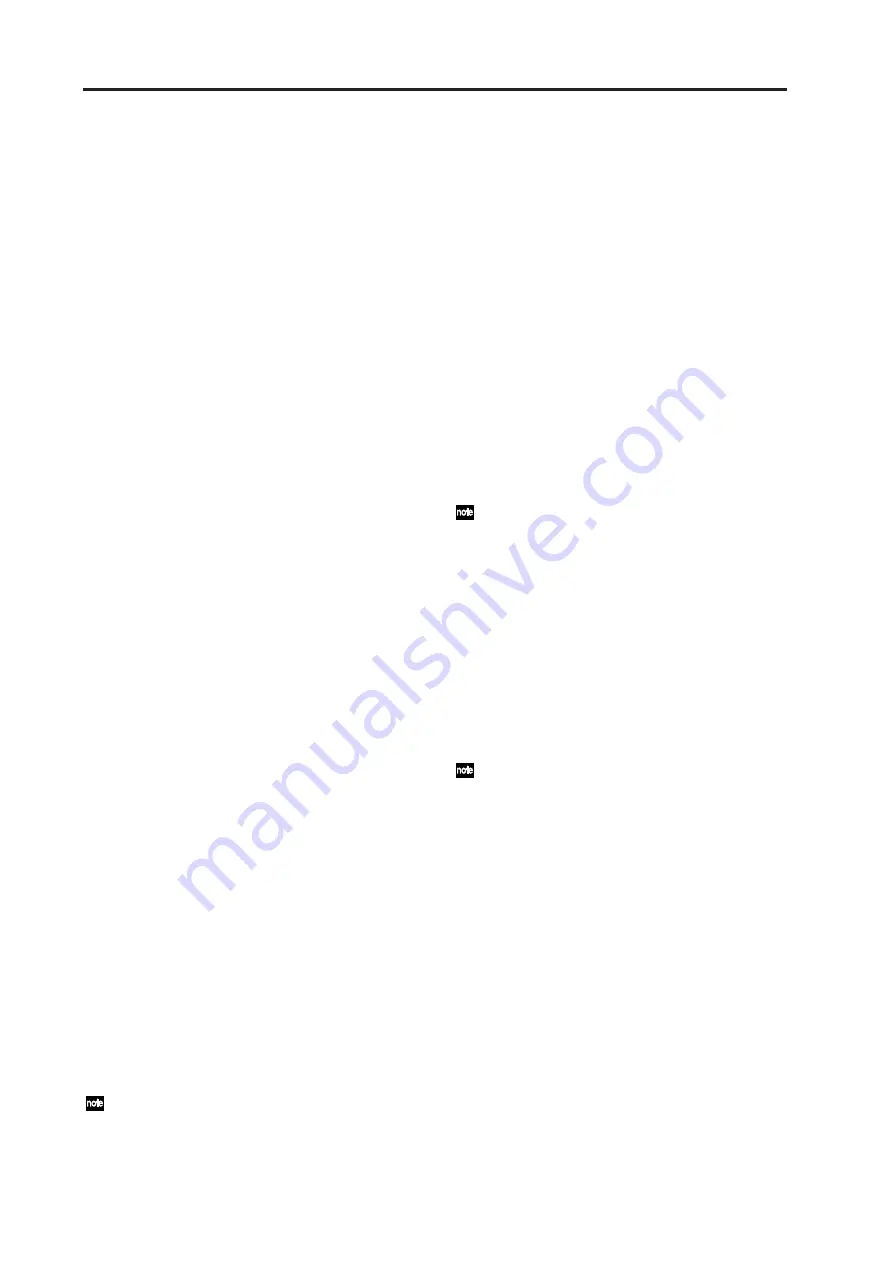
Front and rear panels
12
tion source that will be applied to the cutoff frequency of
the synthesis filter.
[DESTINATION] button
Selects the modulate-able parameter that the selected
virtual patch will be applied to.
[INTENSITY] knob
Adjusts the amount of modulation that will be applied
by the currently selected virtual patch.
14. LFO1/LFO2
[SELECT] button
Selects the LFO waveform. The LED of the selected
waveform will light.
[FREQ] knob
Specifies the LFO rate. The [SELECT] button will blink
in time with the specified rate.
15. DISPLAY & BUTTON
ORIGINAL VALUE LED
When you turn a knob or press a button, this LED will
light when the setting matches the value stored in the
program.
Display
In the Program Play mode, this display shows the pro-
gram names and program numbers.
In the Drum Play mode, this display shows the drum kit
numbers and drum kit names.
In other modes, this display will show the parameters
being edited.
[PROGRAM/VALUE] dial
In the Program Play mode, turning this dial selects pro-
grams. In the Drum Play mode, this selects drum kits. In
other modes turning this dial modifies the value of the
parameter selected by the cursor.
[WRITE] button
Use this button to save any edited settings. When you
press this button, you will be given the option of saving
or not saving; and you will be able to select where the
data will be saved.
[COMPARE] button
Returns the values modified by the knobs and buttons to
the values stored in the program. Use this when you
want to compare the edited sound with the sound that is
stored in the program.
PAGE [+] [–] buttons
Use these to switch pages or tab pages.
CURSOR [
π
/
√
] [
†
/
®
]
Use these to select the parameter you want to edit.
In this manual, the term “cursor” is used when re-
ferring to both the [
π
/
√
] and [
†
/
®
] buttons. If
either the [
π
/
√
] or [
†
/
®
] button is meant, we
will refer to the “cursor [
π
/
√
] button” or “cursor
[
†
/
®
] button.”
[PROGRAM] button
Press this button to enter the Program Play mode.
[DRUM] button
Press this button to enter the Drum Play mode.
[GLOBAL] button
Press this button to enter the Global mode.
[EDIT/YES] button
When you’re in one of the Play modes, press this button
to enter the corresponding Edit mode. This button is
also used to finish executing functions such as Copy or
Write.
In each Edit mode, you can specify a note number or ve-
locity value (e.g., Program Edit mode P03–3: TIMBRE –
ZONE tab page “Bottom” or “Top”) by holding down
this button and pressing a note on the keyboard.
[EXIT/NO] button
Press this button to return from an Edit mode to the cor-
responding Play mode. This button is also used to cancel
a function such as Copy or Write.
You can switch each timbre on or off by holding
down this button and pressing a TIMBRE SELECT
[1]–[4] button.
16. TIMBRE SELECT
[1], [2], [3], [4] buttons
In the Program Play mode, these buttons select the tim-
bre that can be edited from the front panel. By holding
down the [EXIT/NO] button while pressing one of the
timbre select buttons, you can turn the individual timbre
off and on again.
In the Program Edit mode, these buttons select the tim-
bre to be edited.
You can’t select a timbre that is turned off (i.e.,
whose button is dark). If you want to turn the tim-
bre on, you can either make settings in Program
Edit mode, or hold down the [EXIT/NO] button
and press a [1]–[4] button to switch the corre-
sponding timbre on or off.
[VOCODER] button
Switches the vocoder on/off. In the Edit mode, press
this when you want to edit the vocoder settings.
17. EQ (EQUALIZER)
[HI] knob
Adjusts the level of the high frequency range. Turning
this toward the right will boost the level of the high fre-
quency range, and turning it toward the left will de-
crease the level of the high frequency range.
You can specify the center frequency of the high fre-
quency range in the Program Edit mode P13–1: EQ/FX –
EQ tab page.
Summary of Contents for MMT RADIAS
Page 1: ...2 E Owner s Manual...
Page 6: ...Table of Contents vi...
Page 7: ...Operation Introduction Front and rear panels Setup Quick Start Editing...
Page 78: ...Editing 72...
Page 79: ...Parameter Program parameters Drum parameters Global parameters Effect guide...
Page 150: ...Effect guide 144...
Page 151: ...Appendices...






























